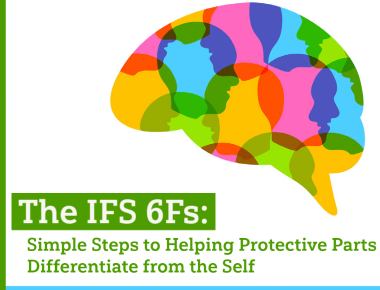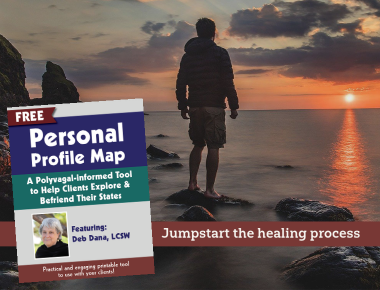Blogs and Free Resources
Here at ∞≈¿÷ ”∆µ, our mission is to provide professionals like you with FREE practical and valuable tools, strategies,
and resources to assist with the great work you do. Find expert tips, helpful worksheets, demonstration videos, CE, news,
and more here. Happy learning!

Catch a Breath Exercise
Helping Kids Regulate Their Emotions
Jennifer Lefebre, PsyD, RPT-S; Tammi Van Hollander, LCSW, RPT-S; and Clair Mellenthin, LCSW, RPT-S, walk you through a fun, playful exercise that can help kids reap the benefits of deep breathing.

Tele-Play Therapy During a Pandemic
Ethically and effectively continue your play therapy work with TELEPLAY. Join renowned play therapy expert, supervisor, and author, Tammi Van Hollander, LCSW, RPT-S as she shares her most valuable resources.

The IFS 6Fs: Simple Steps to Helping Protective Parts Differentiate from the Self
Dr. Frank Anderson, lead trainer at the IFS Institute, shares a simple process that helps your clients gain clarity so they can begin the healing process
Help your clients gain clarity so they can begin the healing process with this simple 6-step process from Dr. Frank Anderson, lead trainer at the IFS Institute.

10 Body Positive Affirmations for the New Year
Here are 10 Body Positive affirmations to help clients heal body shame & cultivate body positivity.

New Children’s Book! Thank You Mind: Understanding My Big Feelings on Tricky Days
Teachers, Therapists and Parents-- Read Along with Jennifer Cohen Harper
Join Jennifer Cohen Harper as she reads her new book children’s book Thank You Mind. This video can be incorporated into therapy sessions, story time at school, or into your child’s bedtime routine

The Psychological Flexibility of Acceptance & Commitment Therapy
FREE 5-minute video
Michael May, LCPC, demonstrates how you can use ACT protocols as a “choose your own adventure” to create treatment plans that work for any client.

Lead clients stuck in cycles of anxiety, fear, distress, and loneliness back to safety so they can start to heal
Polyvagal Theory clinical application expert Deb Dana reveals how to help clients feel safe enough to begin healing and make lasting, positive changes.
Discover a simple tool that helps clients feel safe so they can start the healing process and make lasting changes.

How Post-Traumatic Symptoms Reflect Our Trauma History
When Our Nervous System Adapts to Threat in the Absence of Danger
Individuals who have been exposed to chronic and repeated trauma often have a nervous system still mobilized for danger, evoking trauma responses of fear, fight, or flight long after the threat has passed.

Help Clients of All Ages Get to the Root Cause of Grief
Alissa Drescher, LPC, GC-C, CT, MA, shares a simple technique that helps clients discover the underlying cause of their suffering so they can move forward
Discover a simple technique that helps clients get to the root of their grief and suffering—especially helpful for talking about the grief of living losses.

Desperate Efforts to Regulate a Traumatized Nervous System
Understanding the Vicious Circle of Addictive and Self-Destructive Behavior
Confused and frightened by intense feelings and physical responses—and tormented by their negative thoughts—many trauma survivors feel desperate for relief. Drugs, alcohol, self-harm, and many other compulsive behaviors provide brief periods of respite, but unfortunately, the relief is short-lived. As the body develops tolerance for these addictive or self-destructive impulses, they eventually become worse than the trauma symptoms themselves.

